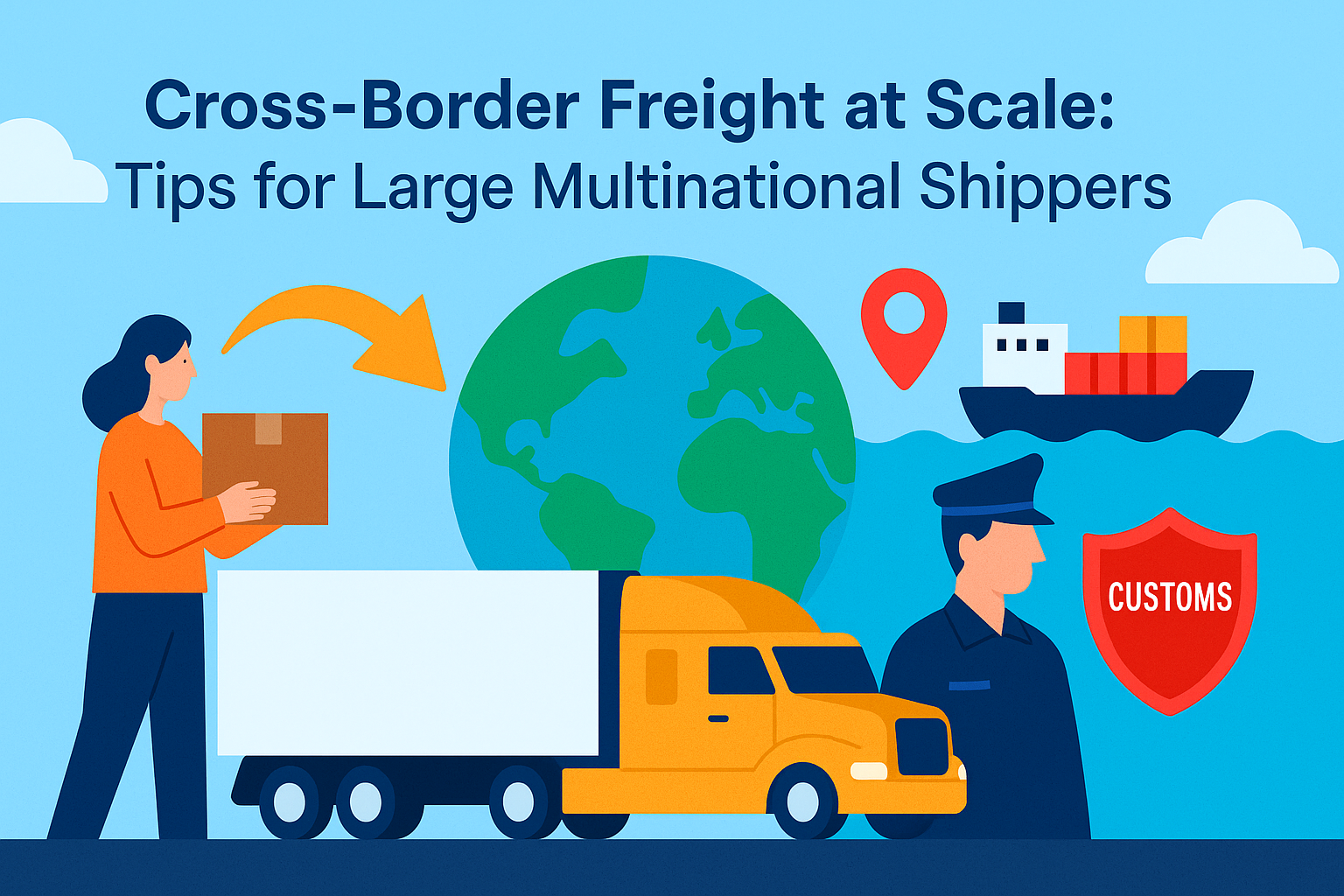Why Scaling Cross-Border Freight Is a Global Challenge
Cross-border freight has become the heartbeat of international trade, yet scaling it efficiently across multiple regions remains one of logistics’ toughest puzzles. From customs delays and tariff fluctuations to visibility gaps and data silos, large multinational shippers are under constant pressure to keep shipments flowing smoothly while cutting costs. The companies that win in this landscape are those that use technology, analytics, and collaboration to turn complexity into competitive advantage.
Understanding the Modern Cross-Border Freight Landscape
Global freight routes are evolving fast. Trade policies shift quarterly, regulatory frameworks change regionally, and fuel and labor costs continue to climb. Multinational shippers managing freight across North America, Europe, and Asia-Pacific need adaptive systems, not static playbooks.
Visibility and compliance must now work hand in hand. Without an integrated TMS logistics platform or data-driven TMS transport visibility, even well-organized freight operations can fall behind.
Optimizing Customs Processes for Cross-Border Freight
One of the top barriers to scalable cross-border freight is customs clearance. Delays in paperwork or inaccurate data can add thousands in demurrage fees. Leading shippers are solving this by:
- Digitizing documentation with TMS cloud integrations.
- Implementing pre-clearance workflows with digital customs brokers.
- Synchronizing compliance data across borders to reduce manual input.
Outsource when needed, but retain control. Platforms like Salesforce TMS integrations allow compliance visibility without slowing operations.
Building Real-Time Visibility Across Regions
Real-time visibility isn’t just about tracking location; it’s about predicting delays, adjusting ETAs, and managing exceptions before they escalate.
To scale successfully:
- Use AI-driven tools for predictive route optimization.
- Leverage IoT sensors for cross-border freight tracking accuracy.
- Consolidate carrier data in one TMS dashboard to monitor KPIs globally.
According to recent logistics tech trends, shippers with high data transparency outperform others by over 20% in on-time delivery metrics.
Read more: Supply Chain Resilience

Aligning Multinational Teams for Cross-Border Freight Coordination
Scaling globally isn’t just about freight lanes, it’s about communication. Many bottlenecks emerge when regional offices use disconnected workflows.
To fix this:
- Standardize communication protocols in your TMS.
- Align KPIs across continents.
- Schedule synchronized reporting cycles to maintain accountability.
Balancing Cost, Compliance, and Sustainability
Large shippers can’t ignore sustainability anymore. Green regulations now affect import/export lanes and fuel sourcing. Balancing these priorities requires:
- Using eco-efficient carriers that meet global environmental standards.
- Reducing empty miles through route optimization and load matching.
- Leveraging TMS freight data to calculate emissions and optimize asset use.
Sustainability and profitability can coexist when powered by transparent, data-driven logistics systems.
Practical Steps to Scale Cross-Border Freight Operations
- Centralize control — unify transport management under one platform.
- Automate workflows — automate booking, documentation, and invoicing.
- Analyze carrier performance — benchmark delivery times and cost efficiency.
- Plan for volatility — create risk maps to manage trade policy shifts.
Scale Smart, Not Just Fast
Scaling cross-border freight successfully means balancing technology, compliance, and agility. Multinational shippers that connect their carrier networks, digitize customs, and adopt scalable TMS solutions position themselves for growth , regardless of global uncertainty.
Ready to scale your logistics network with precision and real-time visibility? Discover how FTM helps you centralize TMS logistics, optimize cross-border freight, and unlock global efficiency.
Book your Free Demo now
